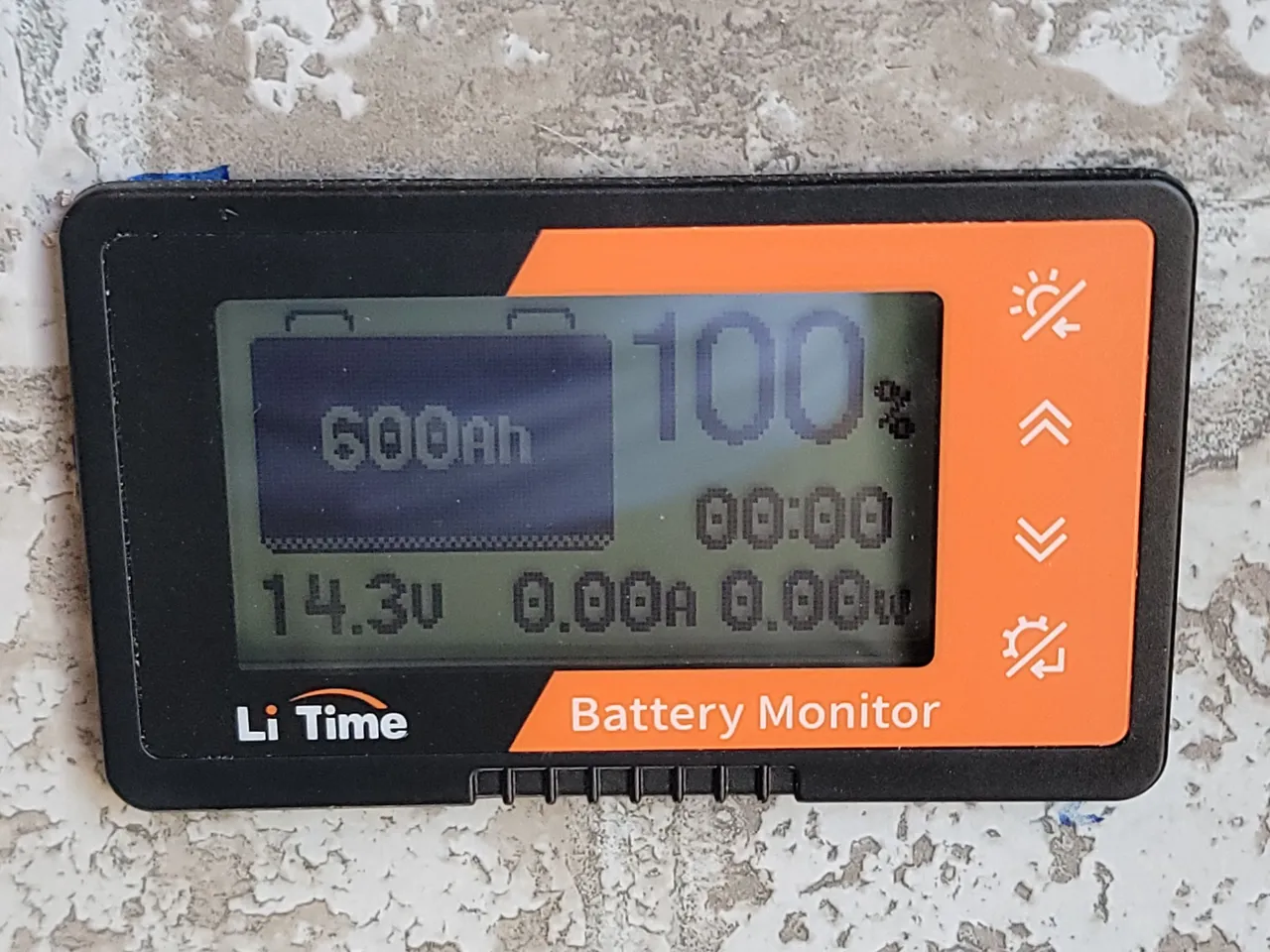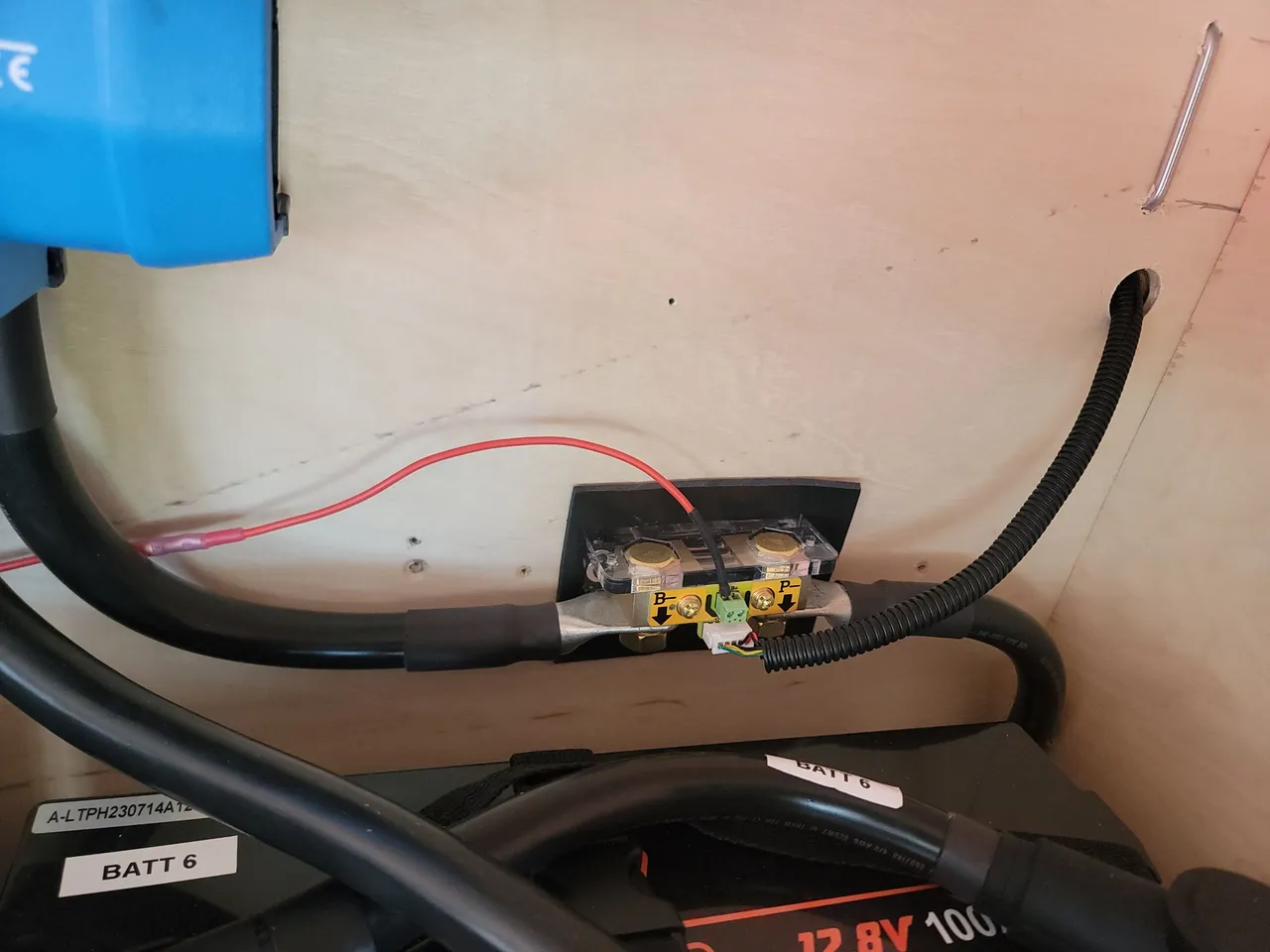Battery Monitor and Shunt

Pictured above is the battery monitor (shunt below) I installed. These components are essential for accurately monitoring the state of charge of my battery bank and the amperage being used by the system.
Battery Monitor
The battery monitor is a digital device that provides real-time information about the battery bank’s status. It displays critical data, including:
State of Charge (SoC): The monitor shows the remaining charge in the battery bank as a percentage. This information is crucial for planning power usage and ensuring that I don't deplete the batteries below safe levels.
Voltage: It displays the current voltage of the battery bank. Monitoring voltage helps in assessing the health of the batteries and ensuring they are operating within the optimal range.
Amperage: The monitor shows the amount of current (in amps) being drawn from or supplied to the batteries. This helps in understanding the power consumption of the connected devices and the charging rate when the batteries are being charged.
Power Consumption: It calculates the power usage in watts, providing a clear picture of the total energy being consumed by the system.
Historical Data: Many battery monitors can store historical data, allowing me to review past usage patterns, which is useful for optimizing power management and identifying any unusual power draw.
Shunt

The shunt is a precision resistor installed in the circuit to measure the current flow. It is typically connected to the negative terminal of the battery bank and linked to the battery monitor. Here's how it works:
Current Measurement: The shunt measures the voltage drop across its terminals when current flows through it. This voltage drop is proportional to the current flowing through the circuit.
High Accuracy: Shunts are designed to provide highly accurate current measurements, even at low current levels. This accuracy is essential for precise monitoring and management of the battery system.
Durability: Shunts are robust and designed to handle high currents without degrading, ensuring reliable performance over the long term.
Benefits of the Battery Monitor and Shunt Setup
Accurate State of Charge Readings: Knowing the exact state of charge helps prevent over-discharging the batteries, which can significantly extend their lifespan and ensure reliable operation.
Effective Power Management: By monitoring the current draw and power consumption, I can make informed decisions about power usage, such as when to reduce load or charge the batteries.
System Health Monitoring: Continuous monitoring of voltage and current helps in early detection of potential issues, such as overcharging, undercharging, or abnormal power consumption. This proactive approach can prevent damage and reduce maintenance costs.
Enhanced Safety: Accurate monitoring reduces the risk of battery damage and associated safety hazards, such as overheating or fire. The system can be set up to trigger alarms or automatic shutdowns in case of critical thresholds being breached.
Optimized Charging: The monitor can provide insights into the charging efficiency, helping optimize the charging process and ensuring the batteries are charged correctly and efficiently.
Data Logging: The ability to log and review historical data is invaluable for identifying trends, optimizing energy usage, and making data-driven decisions for future power needs.
In summary, the installation of the battery monitor and shunt has significantly improved my ability to manage and maintain my battery bank. It provides me with the detailed, real-time information necessary to ensure that my power system is operating efficiently and safely.
Note: I wrote the initial paragraphs and then enhanced them with the help of ChatGPT.